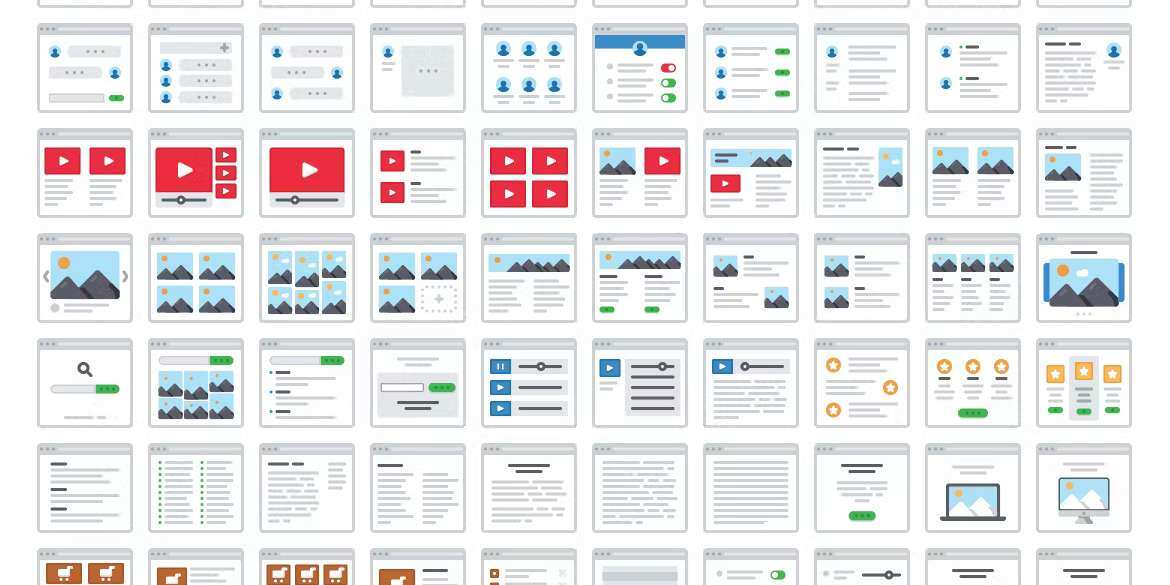UX research tools and software are essential for gathering insights into user behaviour, preferences, and pain points. This, in turn, helps improve the user experience (UX) of websites, apps, and other digital products. These tools vary widely in their capabilities, from conducting surveys and interviews to usability testing tools and analytics.
These user research tools will offer both free plans and paid plans, allowing you to recruit participants to collect feedback. Here's an overview of some common UX research tools and software, categorized by their primary functions:
Survey and Interview Tools
SurveyMonkey and Typeform offer several advantages for UX research, particularly beneficial for product designers and web developers looking to understand user behaviour and preferences.
SurveyMonkey Advantages:
- Customizable Surveys: SurveyMonkey provides a variety of customizable surveys, allowing researchers to tailor questions to their specific needs.
- Data Analysis Tools: It includes tools for data analysis, sample selection, bias elimination, and data representation, which are crucial for making informed decisions based on user feedback.
- Enterprise Options: SurveyMonkey offers enterprise options for comprehensive data analysis and brand management for larger companies.
- Multiple Question Types: The platform supports various question types, which can help gather diverse data forms.
- Integration Capabilities: SurveyMonkey can be integrated with CRM and other systems, making it easier to combine survey data with other user data sources.
Typeform Advantages:
- High-Quality Visuals: Typeform focuses on high-quality visuals and user experience, which can increase survey engagement and completion rates.
- Versatile Data Collection: Users can create surveys, registration forms, quizzes, and more without needing to code.
- Robust Reporting: Typeform provides robust reporting capabilities, making analysing and interpreting survey data easier.
- Integrations: It offers a range of integrations, allowing users to streamline their workflow by connecting survey data with other apps.
- Personalisation: Typeform allows for personalization using features like Recall information, making surveys feel more tailored to the individual respondent.
Both platforms are designed to be user-friendly and are equipped with features that facilitate the collection and analysis of user feedback. This feedback is essential for product designers and web developers to iterate on their designs and ensure that the end product aligns with user needs and expectations.
The ability to quickly test ideas, validate assumptions, and gather user sentiment makes SurveyMonkey and Typeform powerful tools in the UX research process.
Usability Testing and Analytics
UserTesting, Hotjar, and CrazyEgg each offer unique advantages for UX usability testing and analytics, providing insights that can significantly enhance the user experience of websites and applications.
UserTesting Advantages:
- Remote Usability Testing: UserTesting facilitates remote usability testing, allowing for a broader and more diverse participant pool without geographical limitations. This approach is faster and more cost-efficient than traditional in-lab testing, making it accessible for iterative testing and rapid feedback integration.
- Real-World Context: It enables testing in real-world contexts, such as using a fitness app at the gym, providing insights that lab environments cannot replicate. This destination-based testing is invaluable for understanding how products perform in the environments they're designed for.
- Diverse Research Applications: In addition to digital experiences, UserTesting can be applied to non-digital contexts, like navigating a physical space, offering a versatile tool for comprehensive UX research.
Hotjar Advantages:
- Integrated Platform: Hotjar offers an integrated platform combining behaviour analytics and user feedback tools, providing quantitative and qualitative insights. This holistic view allows for a deeper understanding of user behaviour and motivations.
- Cost-Effectiveness: Hotjar is cost-effective as an all-in-one platform, eliminating the need for multiple separate tools. This efficiency can lead to a higher return on investment and faster identification of UX issues.
- Visual Behaviour Insights: With tools like heatmaps and session recordings, Hotjar visually represents user behaviour, highlighting areas of friction and opportunities for improvement. These insights are crucial for optimizing web pages and improving conversion rates.
CrazyEgg Advantages:
- Detailed Interaction Insights: CrazyEgg provides specific insights into where users click, scroll, and interact with a website. This level of detail surpasses traditional analytics tools, allowing for precise identification of usability issues.
- Easy Setup: The platform is easy to set up on any website, requiring only a small code snippet. This ease of use makes it accessible for businesses of all sizes to gather user interaction data quickly.
- Variety of Visualization Tools: CrazyEgg offers multiple visualization options, including heatmaps, scroll maps, and confetti maps. Each provides different insights into user behaviour, collectively offering a comprehensive view of how users engage with a site.
In summary, UserTesting, Hotjar, and CrazyEgg each contribute valuable tools for UX research, from facilitating remote and context-specific usability testing to providing integrated analytics and detailed interaction insights.
These platforms enable UX professionals to understand user behaviour deeply, identify usability issues, and make data-driven decisions to enhance the user experience.
Card Sorting and Tree Testing
Card Sorting and Tree Testing are complementary UX research methods that offer distinct advantages for understanding and improving information architecture (IA) and navigation on websites and applications.
Advantages of Card Sorting:
- User-Centric Organization: Card sorting involves users directly in content organisation, providing insights into their mental models and how they logically categorize information. This user-centric approach ensures that the IA aligns with user expectations, making it easier for them to find what they need.
- Simplicity and Cost-Effectiveness: It is a straightforward and inexpensive method that can be conducted with minimal resources. The simplicity of the process encourages participation and allows for quick iteration and refinement of ideas.
- Insightful for Content Structure: Card sorting helps create intuitive and user-friendly website structures by revealing how users expect to find information. This method is advantageous in the early stages of IA development, where understanding user expectations is crucial.
- Flexibility in Execution: Card sorting can be conducted in-person and remotely, with digital tools available to facilitate remote sessions. This flexibility allows researchers to reach a broader audience and gather diverse insights.
Advantages of Tree Testing:
- Real-World Scenario Testing: Tree testing evaluates the effectiveness of a navigation hierarchy by having users complete tasks based on finding information. This method tests the IA in a context similar to real-world use, providing clear insights into navigational issues and areas for improvement.
- Early and Iterative Evaluation: It can be conducted early in the design process, even before any content or design work has started. This allows teams to refine the IA without needing costly revisions later on.
- Quantitative and Qualitative Insights: Tree testing can be used as a qualitative and quantitative research method. It provides metrics on success rates, time on task, and users' paths, offering a comprehensive view of the IA's effectiveness.
- Efficiency in Identifying Problems: By focusing solely on the information structure, tree testing efficiently identifies problems with menu labels, categories, and the overall navigation schema. This focus helps in making targeted improvements to the IA.
Card sorting and tree testing offer a robust approach to developing and refining information architectures. Card sorting helps understand user expectations and create a user-centric organization of content.
In contrast, tree testing validates the effectiveness of the proposed IA by simulating real-world tasks. By employing both methods, UX researchers can ensure that the IA reflects user mental models and performs effectively in practical use.
Prototyping and Feedback
Maze offers several advantages for prototyping and feedback in UX research, making it a valuable tool for designers and researchers aiming to enhance user experience through iterative design and testing.
Advantages of Using Maze for Prototyping:
- Rapid Prototype Testing: Maze allows for quick and efficient testing of prototypes with real users, enabling teams to validate usability and make informed decisions before investing significant resources in development.
- Usability Insights: It provides a unique usability score based on user interactions, such as misclicks and time-on-screen, offering a quantifiable measure of a prototype's effectiveness. This data-driven approach helps guide future improvements.
- Heatmaps and User Behavior: Maze generates heatmaps, revealing how users navigate prototypes. This visual representation of expected and unexpected user behaviour is invaluable for identifying areas of confusion and opportunities for optimization.
- Integration with Design Tools: Maze seamlessly integrates with popular design tools like Figma, making it easy to set up and test prototypes with real users. This integration streamlines the workflow and enhances collaboration between design and research teams.
Advantages of Using Maze for Feedback:
- Actionable User Feedback: Maze enables the collection of quick and continuous feedback from users, helping to identify and fix usability issues early in the design process. This proactive approach prevents small problems from becoming resource-consuming issues.
- AI-Powered Research Assistance: With features like the Open Question and AI analysis, Maze assists in crafting the perfect questions and analyzing participant answers. This AI support ensures unbiased, actionable responses and deeper, contextual insights.
- Efficient Survey Design and Execution: Maze offers various survey templates and an AI-powered research tool to fine-tune questions, making it easy to design and conduct UX surveys that yield actionable user feedback in hours, not days.
- Demographically Rich Filters: The platform allows for customising insights views with demographically rich filters, enabling researchers to hone in on the most valuable information and make data-informed decisions.
In summary, Maze stands out for its ability to facilitate rapid and insightful prototype testing and feedback collection. Its integration with design tools, usability insights, and AI-powered features for survey design and analysis make it a comprehensive solution for UX research.
By leveraging Maze, teams can ensure their products are user-centric and optimized for the best possible user experience.
Remote User Testing
Lookback, Zoom, Google Meet, and Slack each offer unique advantages for conducting remote user testing in UX research, providing researchers with a range of tools to gather user insights effectively.
Lookback Advantages:
- Real-Time Interaction: Lookback allows for live interaction with participants, enabling researchers to observe and ask questions in real time as users navigate through prototypes or products.
- In-Context Feedback: It facilitates in-context feedback by allowing users to interact with designs in their natural environment, providing a better understanding of how the product fits into their daily lives.
- Recording and Analysis: Lookback records sessions for later analysis, which is crucial for capturing nuanced user behaviour and feedback that may be missed during live observation.
Zoom Advantages:
- Widespread Familiarity: Zoom's widespread adoption means many users are already familiar with the platform, reducing friction and technical difficulties during testing sessions.
- Reliability and Stability: It is known for its reliability and stability, even with less-than-perfect internet connections, ensuring smooth user testing sessions.
- Affordability: Zoom offers a free version that is quite powerful, with affordable paid options that include additional features beneficial for UX research, such as longer group sessions and cloud recording.
Google Meet Advantages:
- Integration with Google Workspace: Google Meet's integration with other Google services, such as Calendar and Drive, streamlines the scheduling and sharing of documents related to user testing sessions.
- Accessibility: As part of the Google ecosystem, Meet is easily accessible to users with a Google account, facilitating quick setup and participation in research studies.
Slack Advantages:
- Communication and Collaboration: Slack is a communication platform that can be used to coordinate and discuss user testing sessions, share insights, and collaborate on research findings.
- Customization and Integration: Slack allows for the integration of various apps and bots that can enhance the remote user testing process, such as scheduling tools or feedback collection bots.
In summary, these tools collectively offer a comprehensive suite of features for remote user testing, including real-time interaction, in-context feedback, session recording, widespread familiarity, reliability, integration with other services, and robust communication and collaboration capabilities.
By leveraging these platforms, UX researchers can conduct effective remote user research that yields valuable insights into user behaviour and preferences, ultimately informing better design decisions.
Documentation and Transcription
Dovetail, Otter.ai, Rev, and Reduct each provide unique advantages for documentation and transcription in UX research, enhancing the efficiency and effectiveness of qualitative data analysis.
Dovetail Advantages:
- Centralised Insight Development: Dovetail excels in compiling user research from various sources, making insights accessible to teams for influencing product roadmaps. Its ability to centralize and simplify insight development is highly valued in user testing and video analysis.
- Searchable, Concise Documentation: It aims to make research findings searchable and concise, addressing the challenge of navigating through extensive reports or recordings to find needed information. This feature is crucial for efficiently recalling and utilizing past research insights.
Otter.ai Advantages:
- Efficient Pattern Recognition: Otter.ai enhances UX research by transcribing conversations and enabling researchers to scan for user patterns and areas of interest. This capability is crucial for sharing insights with teams and identifying trends.
- Complementary to Note-Taking: Otter.ai serves as a complement to traditional note-taking by filling in gaps with accurate transcriptions. This feature allows researchers to verify data quickly, saving hours of manual transcription and ensuring no detail is missed.
Rev Advantages:
- High Accuracy Transcription: Rev boasts an impressive 14% average word error rate, providing high-quality speech-to-text transcription. This accuracy is essential for capturing the nuances of user interviews and facilitating detailed analysis.
- Versatile Recording Options: For in-person and phone interviews, Rev offers convenient recording apps that integrate seamlessly with its transcription services. This versatility ensures high-quality audio recordings that can be quickly transcribed, speeding up the qualitative research process.
Reduct Advantages:
- Streamlined Video Analysis: While specific advantages of Reduct are not detailed in the provided search results, based on existing knowledge, Reduct is known for its video transcription and analysis tools. It allows researchers to transcribe, search, and edit video content efficiently, making analysing user testing sessions and interviews easier.
- Highlight Reel Creation: Reduct enables users to create highlight reels from transcribed videos, facilitating the sharing of key insights with stakeholders. This feature is particularly useful for demonstrating user behaviour and feedback in a compelling and digestible format.
In summary, these tools collectively offer a comprehensive suite of features for enhancing UX research documentation and transcription. Each platform contributes to a more efficient and effective research process, from Dovetail's centralized insight development to Otter.ai's efficient pattern recognition, Rev's high-accuracy transcription, and Reduct's streamlined video analysis.
Participant Recruitment
The website User Interviews offers several advantages for participant recruitment in UX research, streamlining the process of finding and managing research participants.
- Access to a Large Pool of Participants: User Interviews provides access to a vast pool of over 350,000 vetted participants, which can be filtered to match specific demographic and psychographic criteria. This extensive database ensures that researchers can find participants who closely align with their target user profiles.
- Fast Recruitment Process: The platform is designed for speed, allowing researchers to start receiving participant applications within minutes and often fully recruit a study within a few days. This rapid recruitment process is particularly beneficial for projects with tight deadlines.
- Automated Screening and Matching: User Interviews automate the screening and matching process, using custom screener surveys to ensure that only qualified participants are recruited for a study. This automation saves researchers time and increases the quality of the data collected.
- Participant Management Tools: The platform offers a suite of tools for managing participants, including scheduling, messaging, and incentive payments. These tools help researchers stay organized and maintain communication with participants throughout the study.
- Diverse Recruitment Options: User Interviews support a variety of study types, including remote and in-person studies, one-on-one interviews, multi-session studies, and unmoderated tasks. This flexibility allows researchers to choose the best method for their specific research goals.
- Quality and Reliability: The service emphasizes the quality and reliability of its participants, with features like participant ratings and a two-strike policy for no-shows. This focus on quality helps ensure that researchers can rely on participants to show up and provide valuable insights.
- Compliance and Security: User Interviews is committed to compliance with data protection regulations and provides a secure platform for conducting research. This commitment to security and privacy protects both researchers and participants.
In summary, User Interviews offers a comprehensive solution for participant recruitment in UX research, with benefits including a large and diverse participant pool, fast recruitment, automated screening, participant management tools, and a commitment to quality, compliance, and security. These features make it an efficient and reliable choice for researchers looking to gather user insights.
Additional Tools
- Asana: Useful for planning and organizing UX research activities.
- Qualaroo: Offers niche survey-triggering options for targeting different customer segments.
When selecting UX research tools, consider factors such as your research type, ease of use, scalability, support available, and whether a free trial or account is offered. Mixing and matching tools based on your specific needs can provide a comprehensive understanding of user experiences and effectively inform design decisions.
Here at BIAS, we specialise in product, website and UX optimisation through our dedicated product REVEAL. Should you need help, please reach out and talk to our team.




